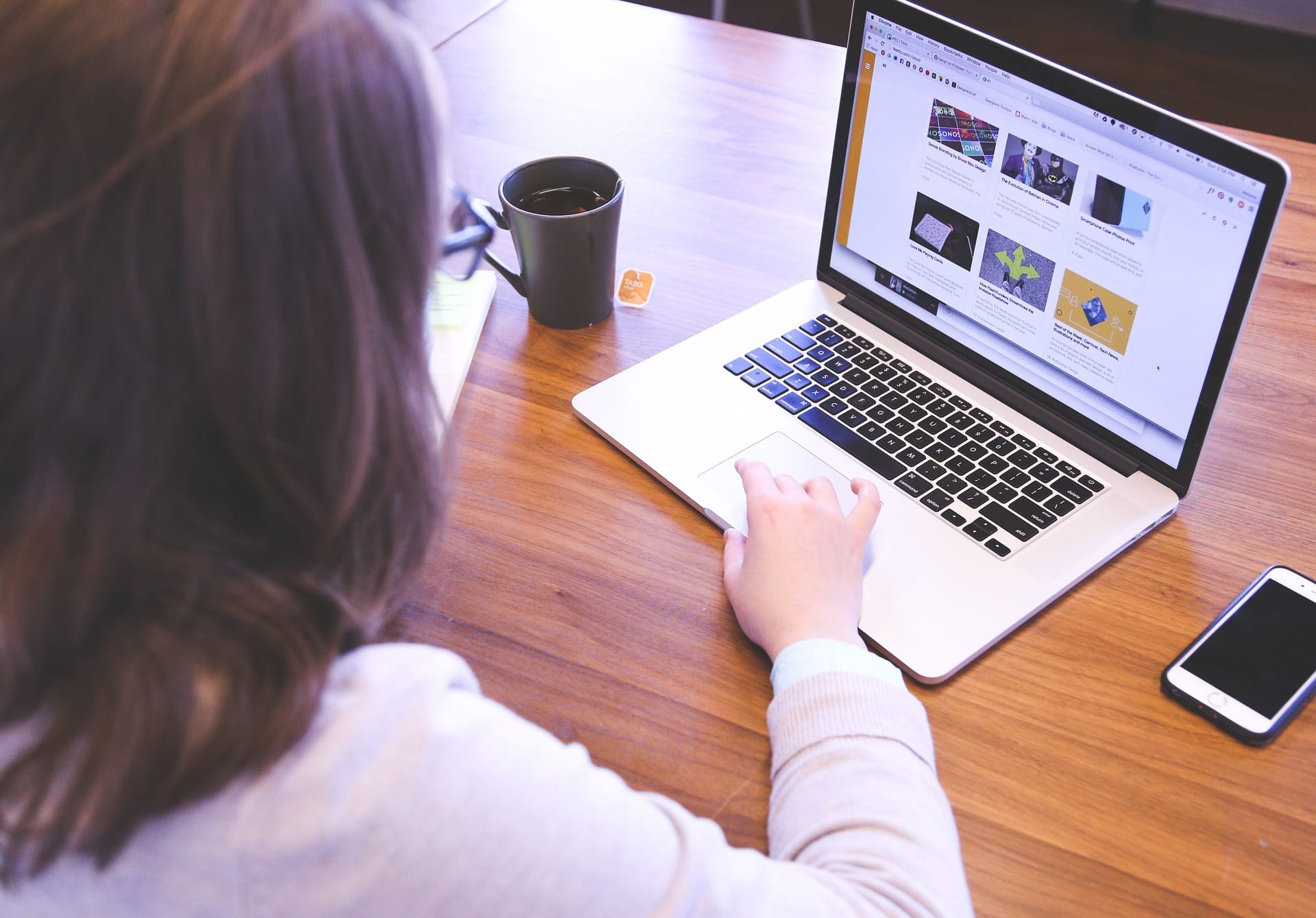There is a widespread concern that light from the screens of smartphones, laptops and other gadgets negatively affects the skin, so you need the same protection from it as from the sun. We decided to check whether this fear is based on scientific data.
About the dangers of blue light from screens write beauty bloggers and sites cosmetic clinics, talk about potential harm women's magazines And lifestyle publications. Some cosmetologists in interviews for Russian federal publications And entertainment portals They quite clearly state the danger of light from gadgets for the skin and call for the use of protective equipment. At the same time, some doctors carefully They say, that there is insufficient data to justify such recommendations, and others, without denying this limitation, advise insure. Cosmetics manufacturers even offer special remedies for “digital aging”.
Blue light or HEV rays (high-energy visible light) called part of the visible spectrum with wavelengths from 380 to 500 nanometers. Thanks to blue light, gadget screens are bright and the image on them is clearly visible. In addition to smartphones and laptops, HEV rays are used in fluorescent lamps, incandescent lamps and LEDs. However, the main source of blue light is not technology or artificial lighting, but the sun. It is thanks to HEV rays that the sky looks bright blue on a sunny day.
blue light penetrates deeper into the skin than ultraviolet rays, which is why it causes concern among dermatologists. UVB rays have the lowest penetration power, affecting only the epidermis and therefore only causing skin redness and sunburn. Ultraviolet A (UVA) rays penetrate the entire epidermis and affect the dermis, promoting premature aging and pigmentation, and can also lead to skin cancer. HEV rays, according to the data available to scientists, affect even deeper layers of the dermis, and tanning, received from blue light, more pronounced and stable. However, a person who sits in front of a monitor all day does not look like he has just returned from a tropical vacation.
The fact is that gadgets emit extremely small amounts of blue light. LED TV average has power 78 μW/cm2 when viewed from a distance of 20 cm, and a laptop - 15 μW/cm2 (for comparison, the sun is 7700 μW/cm2). Researchers at the German cosmetics brand Biersdorf found outfound that a monitor placed at a distance of 30 cm from a person emits the same amount of blue light in a week that the skin receives in just one minute spent outside on a sunny day in midsummer in Hamburg. Not everyone holds a screen (for example, a smartphone) 30 cm from their face, but even in this case, fears are premature. The same minute outside on a sunny day will be equivalent to 10 hours of continuous irradiation of the skin with a smartphone lying directly on it. Watching TV, which is usually at an even greater distance from the face, is also almost harmless to the skin. The findings of German cosmetologists were confirmed by French dermatologists: according to their estimates, the power of blue light emission from computer screens and smartphones is hundreds of times lessthan that of sunlight. Moreover, daily eight-hour use of a computer located at a distance of 20 cm from the face did not provide no negative impact on the skin in terms of pigmentation.
Experts from Harvard Medical School in 2019 compared iPhone 11's maximum brightness, which is the mode in which the device emits the most HEV rays, with mall lighting. It turned out that the smartphone is half as bright as the light in stores, and more than ten times weaker than the light reaching the Earth's surface from the sun. To similar conclusions in 2016 came British scientists. They studied the brightness and amount of blue light emitted from two models of desktop computers, nine laptops, nine tablets and five smartphones. Within 60 minutes of exposure all devices radiated no more than 0.38% of the daily safe blue light limit established by the International Commission on Non-Ionizing Radiation Protection (ICNIRP). That is, even if you use the gadget for 16 hours a day, a person will receive only about 6% of the dose, which raises concerns from the point of view of experts.
At the same time numerous experiments on exposure crops cells dermis in vitro with blue light show alarming results: some cells become less active and live less, while others synthesize less hyaluronic acid, collagen and elastin, which negatively affects the condition of the skin. However, all such tests were carried out in vitro. Fully reproduce All the effects that will occur in the body are impossible with this experimental design. Firstly, dermal cells in the human body are protected by the epidermis, and secondly, in many such studies, the irradiation power exceeded that coming not only from the screen, but also from sunlight.
Some animal experiments also showthat blue light shortens life expectancy. Scientists from Oregon State University placed fruit flies in different living conditions: some of the insects spent 12 hours a day in light from blue LEDs and in the dark, others spent 12 hours in light without the blue spectrum and in darkness, and the third was constantly in the dark. Flies from the first group lived the shortest, and by the end of their lives they suffered from neurodegenerative diseases and had difficulty moving. The second group was a little healthier, but those insects that were kept in complete darkness lived the longest (and better from the point of view of body functioning). However, the authors of the experiment are in no hurry to transfer their conclusions to people - fruit flies, as it turned out, perceived any light as a stress factor, and their body activated the expression of protective agents that attacked, among other things, cells of the nervous and musculoskeletal systems. There is no evidence yet that humans have a similar mechanism. But even if so, it is unlikely that many will agree to live in complete darkness for the sake of longevity and eternal youth.
Moreover, it is hardly possible to protect your skin from blue light with the help of creams and other cosmetics. For UV protection products International Organization for Standardization (ISO) developed strict testing protocol. For cosmetic products against HEV radiation of this standard No - a manufacturer may promise reliable protection thanks to some secret ingredient and not include it at all, or this substance simply will not be effective. In addition, as mentioned above, the blue light emanating from the sun is much more dangerous, so the inscriptions about protection against “digital aging” are nothing more than a marketing ploy.

Note that blue light is active used in medicine. Used in dermatological treatments, HEV rays improve acne and blemishes and can help treat actinic keratoses, a potentially precancerous skin condition caused by overexposure to sunlight. Blue light is also used as part of photodynamic therapy for cancer - it activates photosensitizing agents, a special class of drugs that can destroy cancer cells. The effectiveness of this method is comparable to surgery and chemotherapy, and the risk of side effects is an order of magnitude lower.
Finally, judging by scientific data, the aging process of human skin is slowing down. In dermatology, elasticity is calculated using a certain formula, and the result can be on a scale from 0 to 1, where one corresponds to absolutely elastic, that is, skin that instantly returns to its previous state. In 1988, a group of French scientists measured different skin parameters in 123 volunteers, similar data can be discover and in the 2022 study. It turns out that the average skin elasticity of 25-year-olds in 1988 was 0.87, and in 2022 this parameter was 0.97 for people under the age of about 40. In the group of 40–60 years old, the results were 0.7–0.8 and 0.5–0.87, respectively, for the group of 60–80 years old – 0.55–0.7 and about 0.7. That is, on average, people today look younger than their peers did in the late 1980s. If gadgets had such a destructive effect on the skin, this would hardly be possible.
Thus, although experiments on cell cultures and fruit flies show that blue light leads to damage to skin tissue and even premature death, it is unlikely to be so dangerous for humans. Moreover, you won’t be able to hide from blue light by simply giving up gadgets, because HEV rays are present in natural and artificial lighting. It is likely that living in pitch darkness will keep your skin tighter longer, but in such conditions it is impossible to visually assess this result.
Cover image: Image by StartupStockPhotos from Pixabay
If you find a spelling or grammatical error, please let us know by highlighting the error text and clicking Ctrl+Enter.






